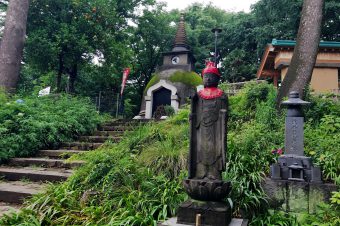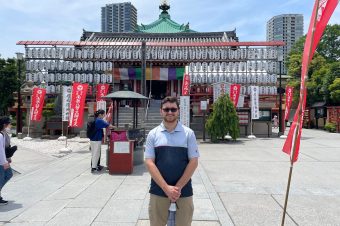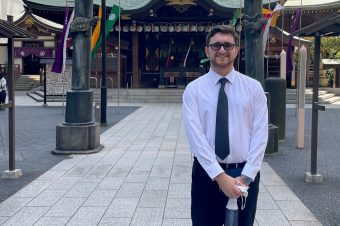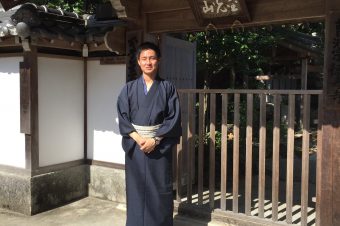The Japanese Tea Ceremony is a traditional practice in which green tea called matcha is made and served to guests, all in a set ceremonial fashion. The ceremony dates back the 9th century CE during the Heian period in Japanese history.
I participated in the ceremony at Hama-rikyu Gardens, at one of the many teahouses located there. The building, called hobai-tei, was the only structure in the garden that survived both the Great Kanto Earthquake in 1923 and the air raids of World War II. The small building is an amazing example of traditional Japanese architecture, with its sliding doors, tatami mat floors, and a small garden that can be viewed from the windows.
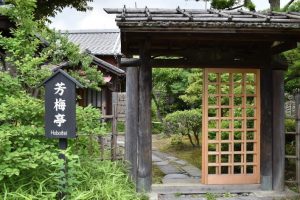
Upon entering the room where the ceremony took place, we sat down along the edges of the room with your backs to the wall. A carpet outlined the sitting area, making it more comfortable to sit on than the tatami mat floor. The room was small so the twelve people, whose home countries ranged from the Japan, the US, and even Luxemburg, filled up all the space all the walls. Once we were all seated, the sensei began to explain to us, both in Japanese and in English, the process and meanings behind the ceremonies and the items. At this point we were also given a small nerikiri, a kind of a Japanese sweet in the shape of a leaf, to eat (pictured below). You can also see the pots and utensils that were used for making the matcha.

The sensei’s student entered the room to make the tea for us. The process of making the tea are precise and identical. Everything from the position the maker sits in, the way the utensils and bowls are held, to how the tea and hot water are stirred should follow the proper steps. After the ceremony, I had the chance to try and make another bowl for myself according to the steps. Two scoops of the matcha powder are put into the bowl, two lines drawn into the powder, a half scoop of hot water added, the water and powder mixed until frothy, one more final clockwise circle made with the stirring utensil, and finally the bowl lifted and turned counterclockwise. This process might sound simple in writing, but I was very slow and managed to gracefully spill some of the powder onto the floor. Although her student was only in middle school, she had the patience and attention to detail to successfully make the tea without error for all of us.
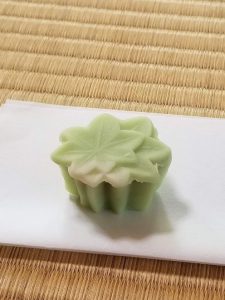
When we received the matcha, we were told to bow to the person to the left of us who had not been served yet and wait for them to bow back before tasting. Finally, you can pick up the small bowl, turn it clockwise, and drink. Matcha, by its nature, is strong and relatively bitter compared to other teas. It is also thick, and the powder can be felt in your mouth. For those who love tea like me, it cannot be beat. The specific blend that we had was made weaker than other ways of making the tea. This was because of the relatively casual nature of the ceremony that day and the fact that people from many different countries were participating and therefore unlikely to be used to the bitterness of matcha.
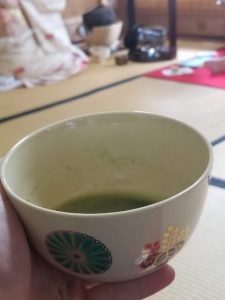
The fact that strangers from many different nations could enjoy this drink and ceremony that day highlights an important idea that the tea ceremony represents, called ichigo ichie (一期一会). Roughly translated as “a once-in-a-lifetime encounter”, this concept should be kept in mind while participating. Every tea ceremony should be unique. The differences in the people, the time, the place, the bowls, the season, and the flowers in the room make an entirely new experience. Many different occasions can bring people together for a tea ceremony, ranging from marriages to simple meetings between friends. The new experiences and the people that you meet should be cherished. Because of this, one should consider others and do their best for them. The philosophy of ichigo ichie lends itself to hospitality.
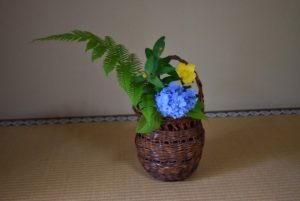
Another thing that adds specialness to the ceremony is many of the purposeful choices that are made regarding the bowls, flowers, and decorations used. All the items used are specifically chosen to reflect the circumstances of the ceremony. One example is the nerikiri, which was shaped as a leaf to mirror the new leaves coming out in Late May. The venetian glass bowl (bottom left) was used because the glass gives a cooler feel than others might, which is important considering the beginning of the summer heat. One the hanging scroll, called a kakejiku, the phrase “lush mountain, green water” is written in calligraphy. This is a Zen phrase that is meant to remind a person to appreciate nature, especially as the spring brings new life all around. All the subtle choices to decorate the room and ceremony help to make the ceremony unique and meaningful.
Many details which must be experienced to understand without having personally experienced the ceremony make the tea ceremony a beautiful and refreshing time. Opportunities abound to join a session while in Japan and I would heavily suggest it to anyone visiting the country.

